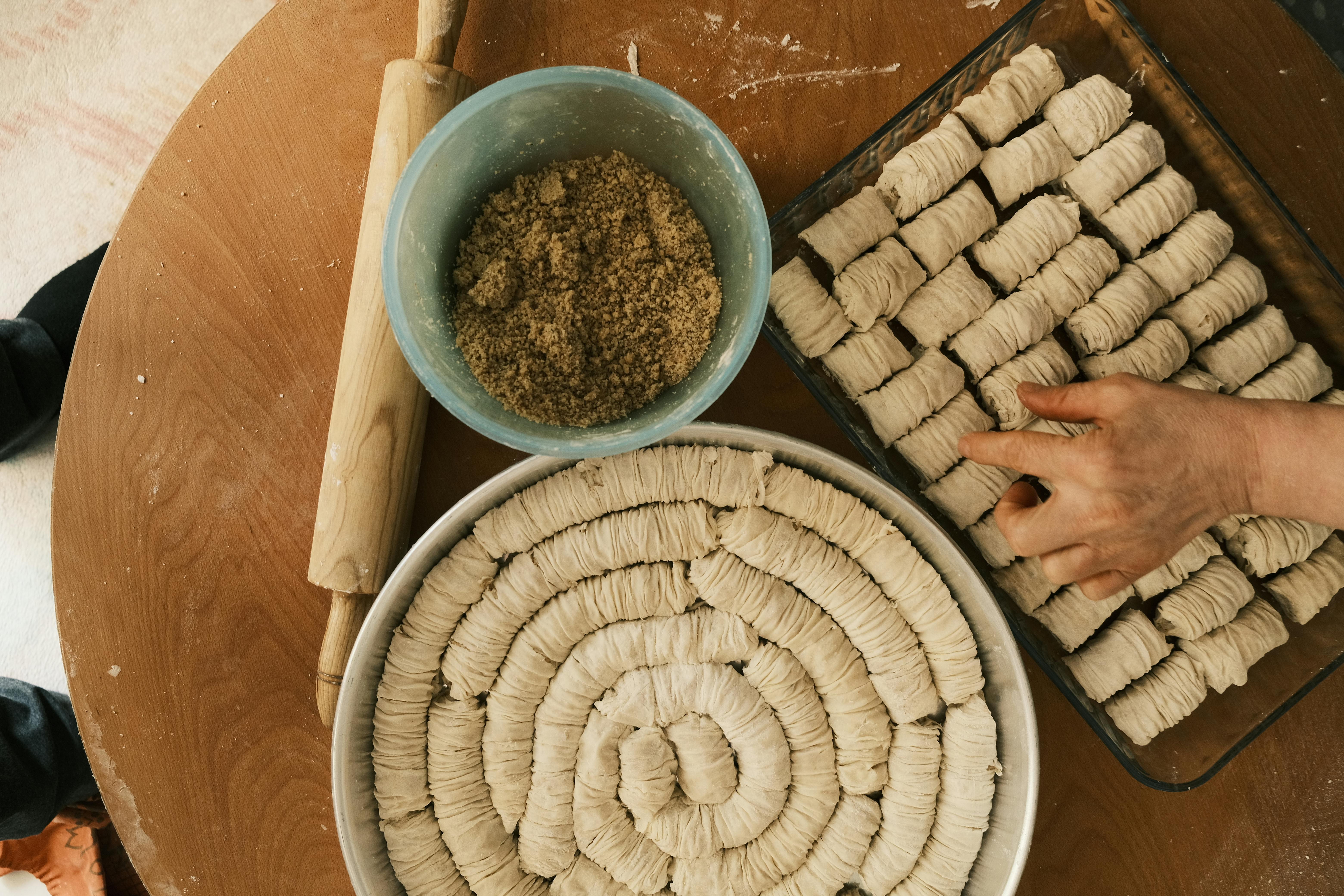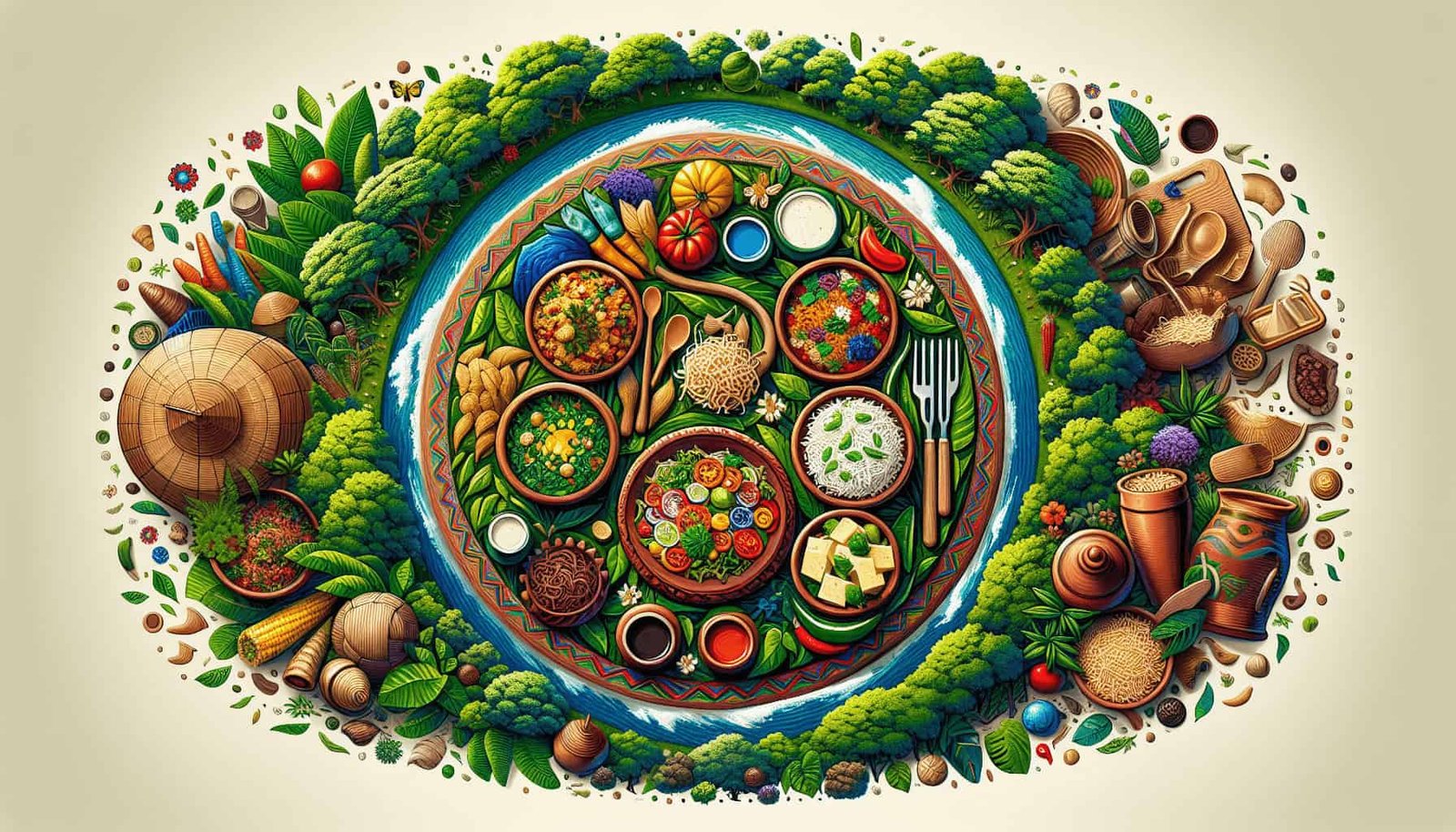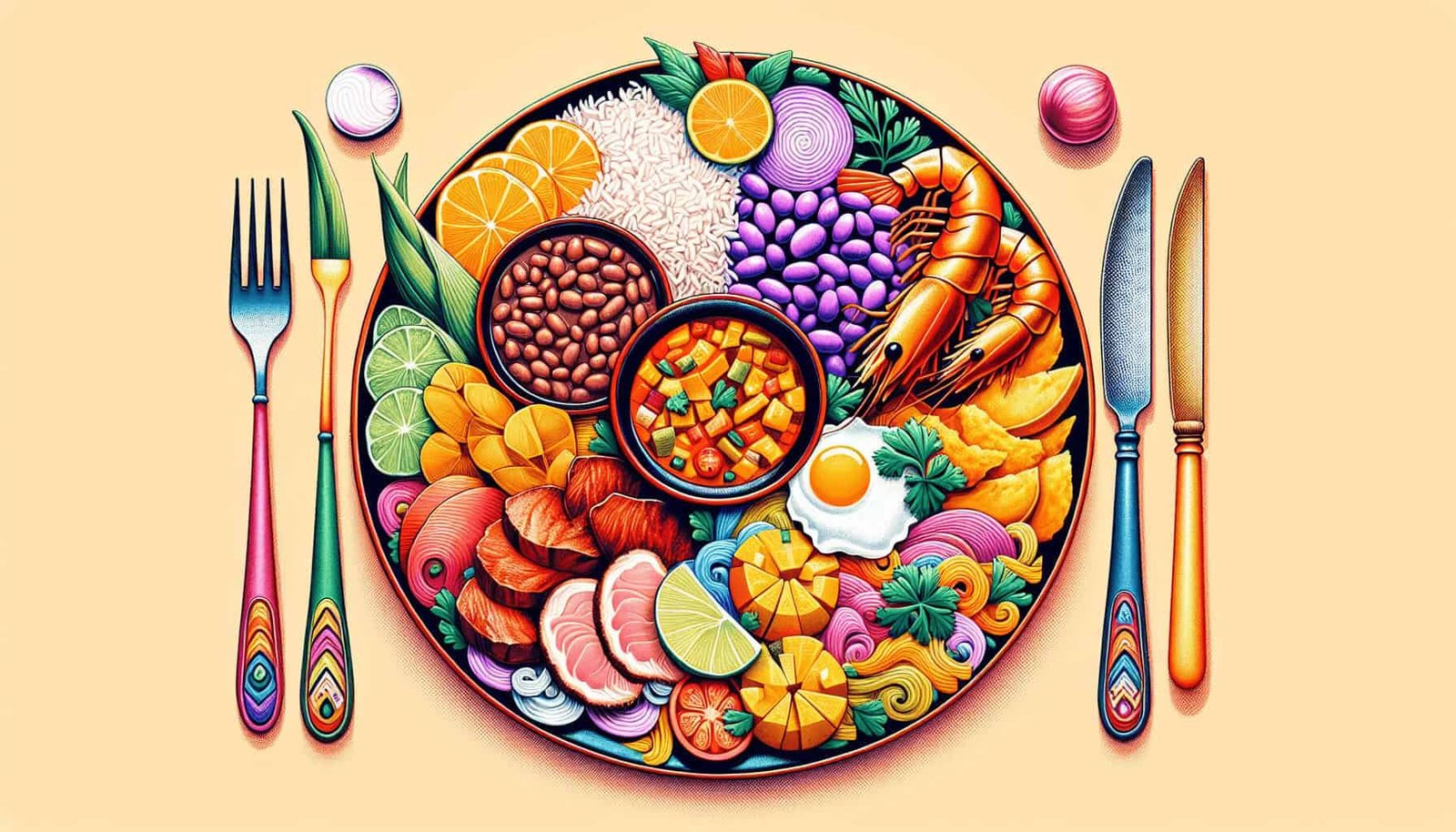If you’re a food lover with a passion for sustainability, Nicaragua is the place for you. With its rich culinary heritage and commitment to eco-friendly practices, this Central American country offers a unique dining experience that is both delicious and environmentally conscious. From vibrant street food markets to elegant farm-to-table restaurants, Nicaragua boasts a variety of establishments that prioritize local sourcing, organic ingredients, and sustainable cooking methods. Join us as we explore the best places to savor Nicaraguan dishes that not only satisfy your taste buds but also support a greener future.

Traditional Nicaraguan Dishes
Nicaraguan cuisine is known for its rich flavors and unique combinations. When it comes to traditional Nicaraguan dishes, there are several that stand out. Let’s explore some of the most popular ones and get a taste of the Nicaraguan culinary scene.
Gallo Pinto
Gallo Pinto, which literally translates to “painted rooster” in English, is a staple in Nicaraguan cuisine. This traditional rice and beans dish is typically served for breakfast or lunch and can be found on the menu of almost every restaurant in the country. The combination of rice, red beans, onions, and bell peppers creates a flavorful and hearty meal that is loved by Nicaraguans and visitors alike.
Ceviche
If you’re a fan of seafood, then Nicaraguan ceviche is a must-try dish. Made with fresh fish or seafood marinated in lime juice and mixed with onions, bell peppers, tomatoes, and cilantro, this refreshing dish is perfect for those hot summer days. The acidity from the lime juice not only adds flavor but also helps to “cook” the fish, resulting in a delicious and tangy dish.
Indio Viejo
Indio Viejo is a traditional Nicaraguan stew that combines meat, usually beef or chicken, with cornmeal, tomatoes, onions, and bell peppers. The dish is slow-cooked to perfection, allowing all the flavors to meld together. The cornmeal gives the stew a thick and hearty texture, while the spices add a touch of warmth. Indio Viejo is often enjoyed with tortillas or served over rice, making it a filling and satisfying meal.
Vigorón
Vigorón is a popular street food dish that consists of boiled yuca, chicharrón (fried pork rinds), and cabbage slaw. The name “vigorón” comes from the Spanish word “vigor,” meaning vigor or energy, which perfectly describes the boost of flavor and satisfaction you’ll experience when enjoying this dish. The combination of the soft and starchy yuca, crispy chicharrón, and refreshing cabbage slaw creates a mouthwatering symphony of textures and tastes.
Sustainable Practices in Nicaraguan Cuisine
Nicaragua is not only known for its delicious food but also for its commitment to sustainability. From sourcing local ingredients to reducing food waste, there are several sustainable practices that are deeply rooted in Nicaraguan cuisine. Let’s take a closer look at some of these practices and the positive impact they have on both the environment and the community.
Locally-Sourced Ingredients
One of the key aspects of sustainable eating in Nicaragua is the use of locally-sourced ingredients. Many restaurants and food establishments in Nicaragua prioritize working with local farmers, fishermen, and artisans to obtain the freshest and most sustainable ingredients. By sourcing ingredients locally, they support the local economy, reduce the carbon footprint associated with transportation, and ensure the quality and authenticity of their dishes.
Seasonal Cooking
Seasonal cooking is another sustainable practice that is widely embraced in Nicaraguan cuisine. By using ingredients that are in season, chefs can create dishes that are not only bursting with flavor but also minimize the impact on the environment. Seasonal produce is usually more abundant, affordable, and requires less transportation, which helps to reduce greenhouse gas emissions. Embracing the seasonal bounty of fruits, vegetables, and other ingredients allows for a greater variety of dishes while supporting sustainable farming practices.
Reducing Food Waste
Food waste is a global issue, and Nicaragua is taking strides to combat it in the culinary world. Many restaurants and food establishments in Nicaragua actively work to reduce food waste through various initiatives. This includes careful meal planning, portion control, and creative reuse of ingredients. Leftover ingredients or dishes that are not sold are often repurposed or donated to local food banks or organizations, ensuring that nothing goes to waste. By focusing on reducing food waste, restaurants in Nicaragua are not only being environmentally conscious but also showing their commitment to making the most of every ingredient and minimizing their environmental impact.
Community Engagement
Community engagement plays a crucial role in promoting sustainability in Nicaraguan cuisine. Many restaurants and food establishments actively engage with the local community, working together on initiatives that promote sustainable practices. This can include organizing events, workshops, or educational programs that raise awareness about sustainable eating, supporting local farmers and artisans, and working towards a more resilient and environmentally friendly food system. The collaboration between restaurants and the community fosters a sense of shared responsibility and builds a stronger and more sustainable food culture.
Restaurants Promoting Sustainability
In Nicaragua, there are several restaurants that not only offer delicious traditional dishes but also place a strong emphasis on sustainability. Let’s explore some of the top establishments that are leading the way in promoting sustainable practices in Nicaraguan cuisine.
El Zaguan
El Zaguan is a renowned restaurant located in the heart of Granada, Nicaragua. With a commitment to using locally-sourced ingredients, El Zaguan offers a farm-to-table dining experience that showcases the flavors and traditions of Nicaraguan cuisine. The menu changes regularly to reflect the seasons and the availability of fresh ingredients, ensuring that diners can enjoy the best of what the region has to offer. The restaurant also focuses on reducing food waste and engages with the local community through various initiatives, such as hosting cooking classes and sourcing ingredients from local farmers. El Zaguan is a must-visit for anyone looking to indulge in sustainable Nicaraguan cuisine.
Las Colinas
Nestled in the beautiful colonial city of León, Las Colinas is a restaurant that prides itself on its commitment to sustainability. The menu at Las Colinas features a range of traditional Nicaraguan dishes, all made with locally-sourced ingredients. From their Gallo Pinto to their fresh ceviche, every dish is crafted with care and attention to detail. Las Colinas also prioritizes reducing food waste by repurposing ingredients and supporting local farmers. The cozy and welcoming atmosphere makes Las Colinas the perfect place to enjoy a sustainable dining experience.
El Tercer Ojo
El Tercer Ojo, located in the artistic hub of San Juan del Sur, is a restaurant that not only delights the taste buds but also embraces sustainability. With a menu that is dedicated to plant-based and vegetarian options, El Tercer Ojo offers a wide array of dishes that are both delicious and environmentally friendly. From their colorful salads to their flavorful stir-fries, every dish at El Tercer Ojo is made with locally-sourced ingredients and prepared with a conscious effort to minimize the environmental footprint. The restaurant also actively engages with the local community by hosting events and workshops that promote sustainable living. If you’re a vegetarian or vegan traveler looking for sustainable dining options, El Tercer Ojo is the place to be.
La Finca y el Mar
La Finca y el Mar is a charming restaurant located in the picturesque town of San Juan del Sur. Known for its dedication to sustainability, La Finca y el Mar offers a farm-to-table experience that showcases the best of Nicaraguan cuisine. The restaurant’s menu features a variety of dishes made with locally-sourced ingredients, including fresh seafood, organic vegetables, and flavorful spices. La Finca y el Mar also takes pride in its eco-friendly practices, such as using solar power, reusable and recyclable packaging, and supporting sustainable fishing practices. With its stunning ocean views and commitment to sustainability, La Finca y el Mar is a true gem for those seeking a memorable and sustainable dining experience.
Farm-to-Table Experiences
For those looking to get a firsthand experience of sustainable eating in Nicaragua, there are several farm-to-table experiences available. These experiences allow you to connect with local farmers, learn about sustainable farming practices, and even enjoy cooking classes using locally-sourced ingredients. Let’s explore some of the farm-to-table experiences that Nicaragua has to offer.
Organic Farms and Plantations
Nicaragua is home to many organic farms and plantations that offer farm-to-table experiences. These farms not only produce a wide variety of organic fruits, vegetables, and herbs but also provide visitors with the opportunity to learn about sustainable agriculture. From visiting coffee plantations and cocoa farms to exploring organic vegetable gardens, these experiences allow you to see firsthand how food is grown and harvested sustainably. Many farms also offer tours and cooking classes, where you can learn traditional recipes and techniques using the freshest ingredients.
Cooking Classes with Local Farmers
What better way to learn about sustainable eating than by cooking with the locals themselves? Nicaragua offers various cooking classes that are led by local farmers and chefs. These classes not only teach you how to prepare traditional Nicaraguan dishes but also emphasize the use of locally-sourced and sustainable ingredients. You’ll not only learn new recipes but also gain insights into the cultural and culinary heritage of Nicaragua. Cooking classes are a fantastic way to support local farmers and artisans while embracing sustainable eating practices.
Eco-Tours
For those looking for a more immersive and educational experience, eco-tours are a great option. These tours take you on a journey through Nicaragua’s diverse landscapes, highlighting the sustainable practices employed by local farmers, fishermen, and artisans. Whether it’s exploring organic coffee farms in the highlands, snorkeling in marine protected areas, or visiting sustainable fishing villages, eco-tours allow you to witness firsthand the positive impact of sustainable practices on the environment and the local communities. These experiences not only provide memorable adventures but also inspire a deeper appreciation for the interconnectedness of food, nature, and sustainable living.

Eco-Friendly Dining Establishments
To further promote sustainability, many dining establishments in Nicaragua implement eco-friendly practices. From solar-powered restaurants to zero-waste initiatives, these establishments prioritize minimizing their environmental impact and promoting sustainable dining experiences. Let’s explore some of the eco-friendly practices you can expect to find in Nicaraguan dining establishments.
Solar-Powered Restaurants
In Nicaragua, solar-powered restaurants are becoming increasingly popular as a way to reduce reliance on non-renewable energy sources. These restaurants harness the power of the sun to generate electricity, reducing their carbon footprint and operating costs. By using solar energy, these establishments are able to power their kitchens, lighting, and appliances in a sustainable and environmentally friendly way. Dining at a solar-powered restaurant not only allows you to enjoy delicious food but also supports the transition to renewable energy sources.
Zero-Waste Practices
Many dining establishments in Nicaragua are implementing innovative zero-waste practices to minimize their environmental impact. This includes initiatives such as composting food waste, recycling packaging materials, and reducing single-use plastics. By prioritizing zero-waste practices, these establishments not only contribute to a cleaner and healthier environment but also inspire their customers to make sustainable choices. From using biodegradable takeout containers to offering reusable water bottles, these restaurants are leading the way in sustainable dining experiences.
Reusable and Recyclable Packaging
Another eco-friendly practice that is gaining momentum in Nicaraguan dining establishments is the use of reusable and recyclable packaging. To reduce the amount of waste generated by single-use containers, many restaurants are opting for packaging solutions that can be reused or recycled. This includes reusable food containers, biodegradable takeout bags, and compostable cutlery. By choosing reusable and recyclable packaging, these establishments are making a positive impact on the environment and encouraging their customers to do the same.
Nicaraguan Street Food
No culinary exploration of Nicaragua would be complete without trying the vibrant and delicious street food that the country has to offer. Street food not only provides a taste of authentic Nicaraguan flavors but also presents opportunities for sustainable and environmentally-friendly dining experiences. Let’s delve into the world of Nicaraguan street food and discover its sustainable side.
Vegan and Vegetarian Options
Nicaraguan street food is not limited to meat-based dishes. In fact, you can find a wide range of vegan and vegetarian options that are not only delicious but also sustainable. From plant-based tacos to veggie pupusas, these street food offerings cater to those seeking a plant-based culinary experience. By choosing vegan and vegetarian street food options, you are not only embracing sustainable eating but also supporting local vendors who are adapting to the changing food landscape.
Supporting Local Vendors
One of the best ways to enjoy Nicaraguan street food sustainably is by supporting local vendors. Street food vendors often rely on locally-sourced ingredients, supporting the local economy and reducing the carbon footprint associated with transportation. By choosing to eat from these vendors, you are not only indulging in mouthwatering flavors but also contributing to the livelihoods of the individuals and communities that produce this delectable food.
Environmentally-Friendly Packaging
In recent years, there has been a push towards environmentally-friendly packaging in Nicaraguan street food. Many vendors now use biodegradable or compostable containers, plates, and utensils to serve their food. By utilizing these sustainable packaging alternatives, street food vendors are minimizing waste and reducing the environmental impact of their businesses. So, when you savor that delicious empanada or crispy tostada from a street food vendor, remember that you are also supporting their efforts towards a more sustainable future.

Sustainable Seafood Options
Being a country rich in coastal resources, Nicaragua is a treasure trove for seafood lovers. However, enjoying seafood sustainably is vital to protect these valuable resources for future generations. Let’s explore some of the sustainable seafood options available in Nicaragua and the practices that promote responsible fishing.
Responsible Fishing Practices
Responsible fishing practices are essential for the preservation of marine ecosystems and the sustainability of fish populations. Many seafood establishments in Nicaragua prioritize sourcing their seafood from suppliers who follow responsible fishing practices. This includes adhering to catch limits, avoiding endangered fish species, and using sustainable fishing methods such as pole-and-line or handline fishing. By choosing seafood from establishments that prioritize responsible fishing, you can enjoy your meal with the knowledge that you are supporting sustainable practices.
Marine Protected Areas
Nicaragua has made significant strides in establishing marine protected areas to conserve its fragile marine ecosystems. These protected areas play a crucial role in safeguarding biodiversity, promoting sustainable fishing practices, and preserving the beauty of Nicaragua’s coastlines. Many seafood restaurants in Nicaragua choose to source their seafood from these protected areas, ensuring that their offerings are both fresh and sustainably caught. When dining at these establishments, you can savor the flavors of the sea, knowing that your meal is contributing to the preservation of these invaluable marine resources.
Certified Sustainable Seafood Restaurants
Certifications such as the Marine Stewardship Council (MSC) provide valuable guidance to consumers when it comes to choosing sustainable seafood options. In Nicaragua, there are several seafood restaurants that hold MSC certifications, guaranteeing that their seafood is sourced sustainably. These certifications ensure that the seafood has been caught or farmed in a way that minimizes environmental impact and promotes responsible fishing practices. By dining at certified sustainable seafood restaurants, you can make informed choices that support sustainable fisheries and protect our oceans.
Exploring Indigenous Cuisine
Nicaragua is home to a rich tapestry of indigenous cultures, each with its own unique culinary traditions. Exploring indigenous cuisine allows you to experience the flavors, techniques, and stories that have been passed down through generations. Let’s delve into some of the indigenous cuisines of Nicaragua and celebrate the diversity and sustainability ingrained in these traditions.
Miskito Cuisine
The Miskito people, an indigenous group that lives on Nicaragua’s eastern coast, have a rich culinary heritage. Miskito cuisine combines traditional indigenous ingredients with Caribbean, African, and European influences. One of the most famous dishes is “rondon,” a hearty seafood stew made with coconut milk, plantains, yuca, and spices. Miskito cuisine often incorporates sustainable fishing practices, as seafood plays a central role in their diet. Exploring Miskito cuisine allows you to taste the flavors of the ocean and experience the sustainable practices that have sustained this community for centuries.
Garifuna Cuisine
The Garifuna community, found primarily along Nicaragua’s Caribbean coast, has its own distinct culinary traditions. Garifuna cuisine is a unique blend of African, indigenous, and Latin American influences. One of the staple dishes is “hudut,” a flavorful fish soup made with coconut milk, spices, and root vegetables. Garifuna cuisine often utilizes traditional fishing techniques and emphasizes sustainable seafood sourcing. Exploring Garifuna cuisine not only provides a delicious culinary experience but also offers a glimpse into the customs and traditions of this vibrant community.
Rama Cuisine
The Rama people, an indigenous group that resides on Nicaragua’s southeastern coast, have a rich culinary heritage deeply rooted in the natural resources of their region. Rama cuisine often features the use of local fruits, vegetables, and seafood, with dishes like “rundown” and “sere.” Rama people have a deep respect for their environment and practice sustainable fishing and farming techniques. Exploring Rama cuisine allows you to taste the flavors of the rainforest and experience the sustainable practices that have sustained this community for generations.

Collaboration with Local Communities
Promoting sustainability in Nicaraguan cuisine goes beyond just using local ingredients or implementing eco-friendly practices. It involves collaboration with local communities to create meaningful connections, support local artisans and farmers, and foster cultural exchanges. Let’s explore the ways in which collaboration with local communities contributes to sustainable eating in Nicaragua.
Supporting Indigenous Farmers
Collaborating with indigenous farmers is a key aspect of sustainable eating in Nicaragua. Many restaurants and food establishments actively work with indigenous communities to source ingredients, support their agricultural practices, and create economic opportunities. By engaging with local farmers, establishments not only ensure the freshest and most sustainable ingredients but also contribute to the preservation of indigenous knowledge and food traditions. The collaboration between restaurants and indigenous farmers is a win-win situation that fosters sustainability and cultural exchange.
Community-Focused Culinary Events
Organizing community-focused culinary events is another way in which restaurants promote sustainable eating in Nicaragua. These events bring people together to celebrate local food traditions, share knowledge, and showcase sustainable practices. From food festivals to workshops highlighting traditional cooking techniques, these events engage the community and foster a sense of pride and connection to their culinary heritage. By participating in these events, you not only support sustainable eating practices but also contribute to the growth and vitality of the local community.
Cultural Exchanges
Cultural exchanges play a vital role in promoting sustainable eating in Nicaragua. Many restaurants and food establishments actively collaborate with international chefs, culinary students, and researchers to create opportunities for cross-cultural learning and innovation. These exchanges allow for the sharing of sustainable practices, culinary techniques, and cultural traditions. By embracing cultural exchanges, restaurants in Nicaragua not only position themselves as catalysts for sustainability but also create a platform for creative collaboration and the exchange of ideas.
Conclusion
Nicaraguan cuisine is a flavorful journey that intertwines tradition, sustainability, and community. From the traditional dishes like Gallo Pinto, Ceviche, Indio Viejo, and Vigorón to the emphasis on sustainable practices, collaboration with local communities, and exploration of indigenous cuisines, Nicaragua offers a world of culinary delights for those seeking a sustainable dining experience. Whether you choose to indulge in a farm-to-table meal, savor street food, or dine at eco-friendly establishments, embracing Nicaraguan cuisine with an emphasis on sustainability is not only a delicious experience but also a commitment to supporting the environment, local communities, and the preservation of culinary traditions for generations to come. So, pack your appetite and embark on a culinary adventure through the sustainable delights of Nicaraguan cuisine.
